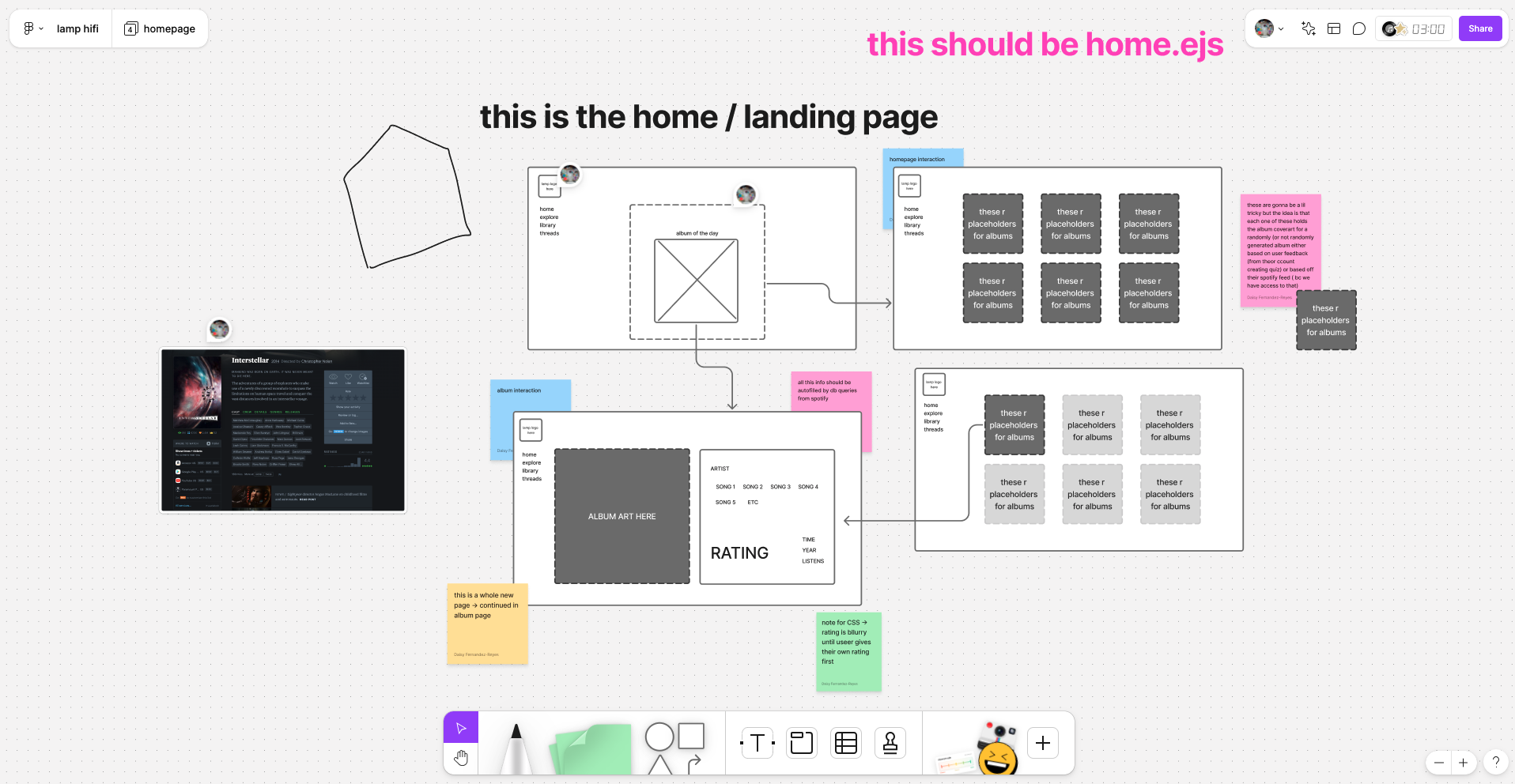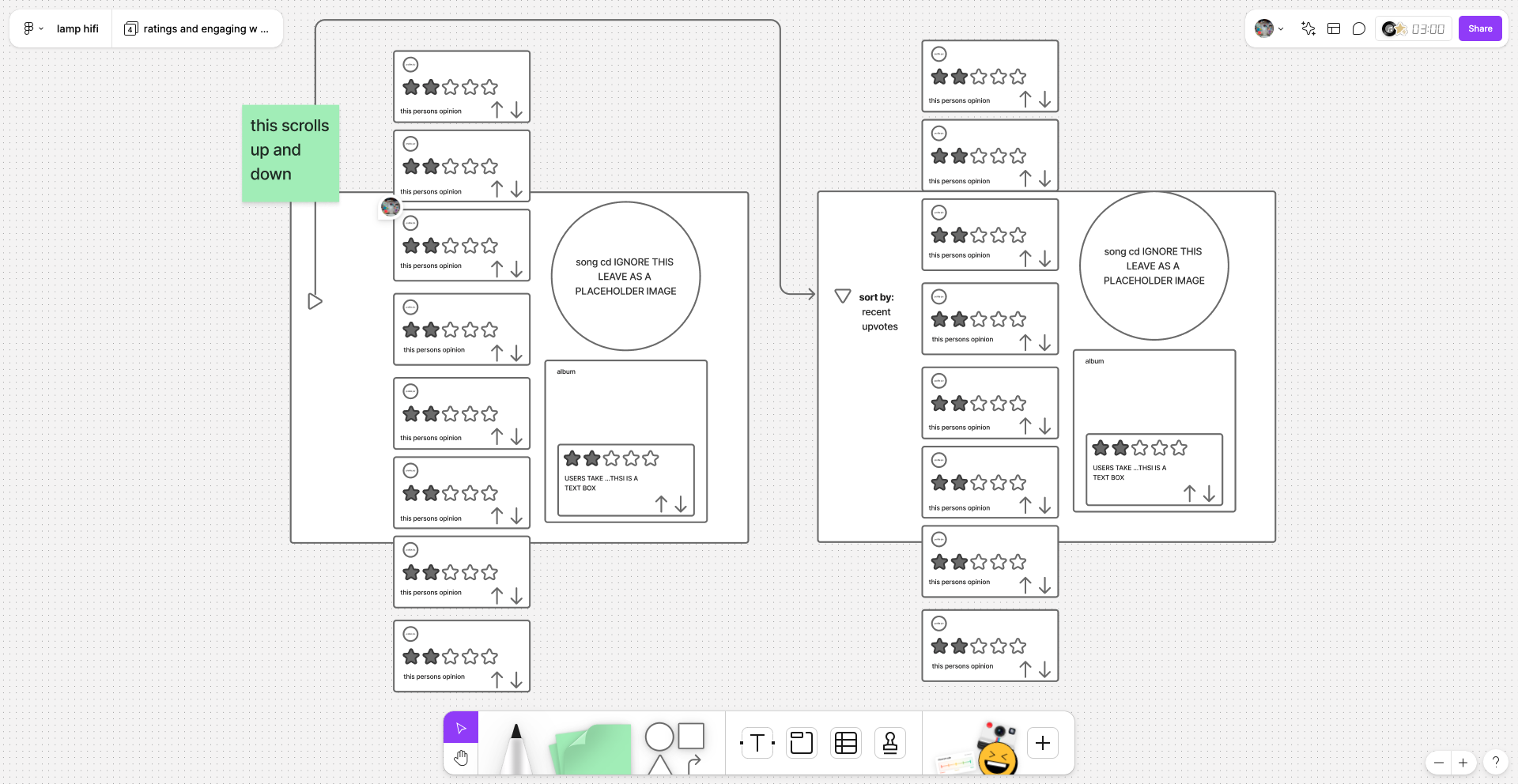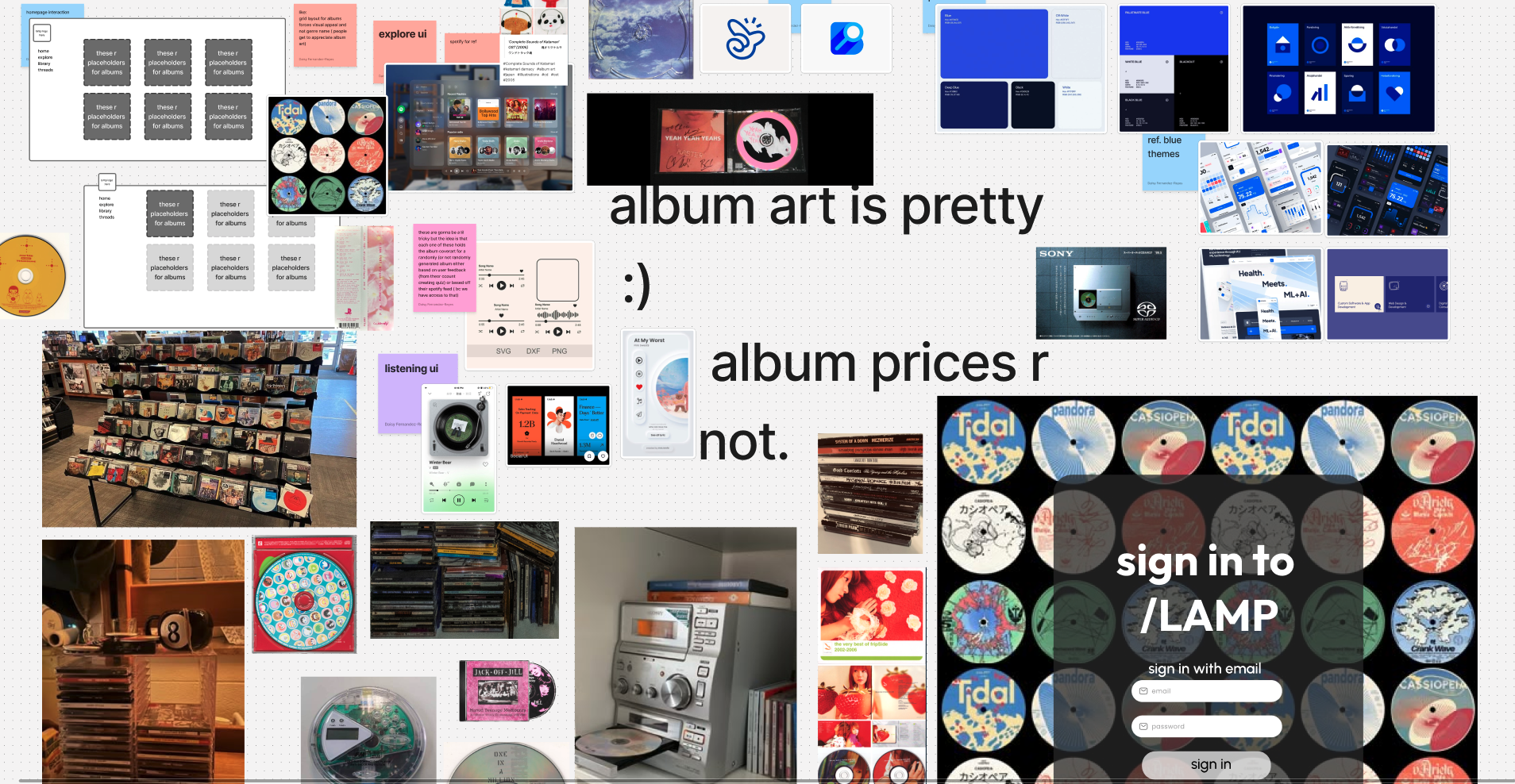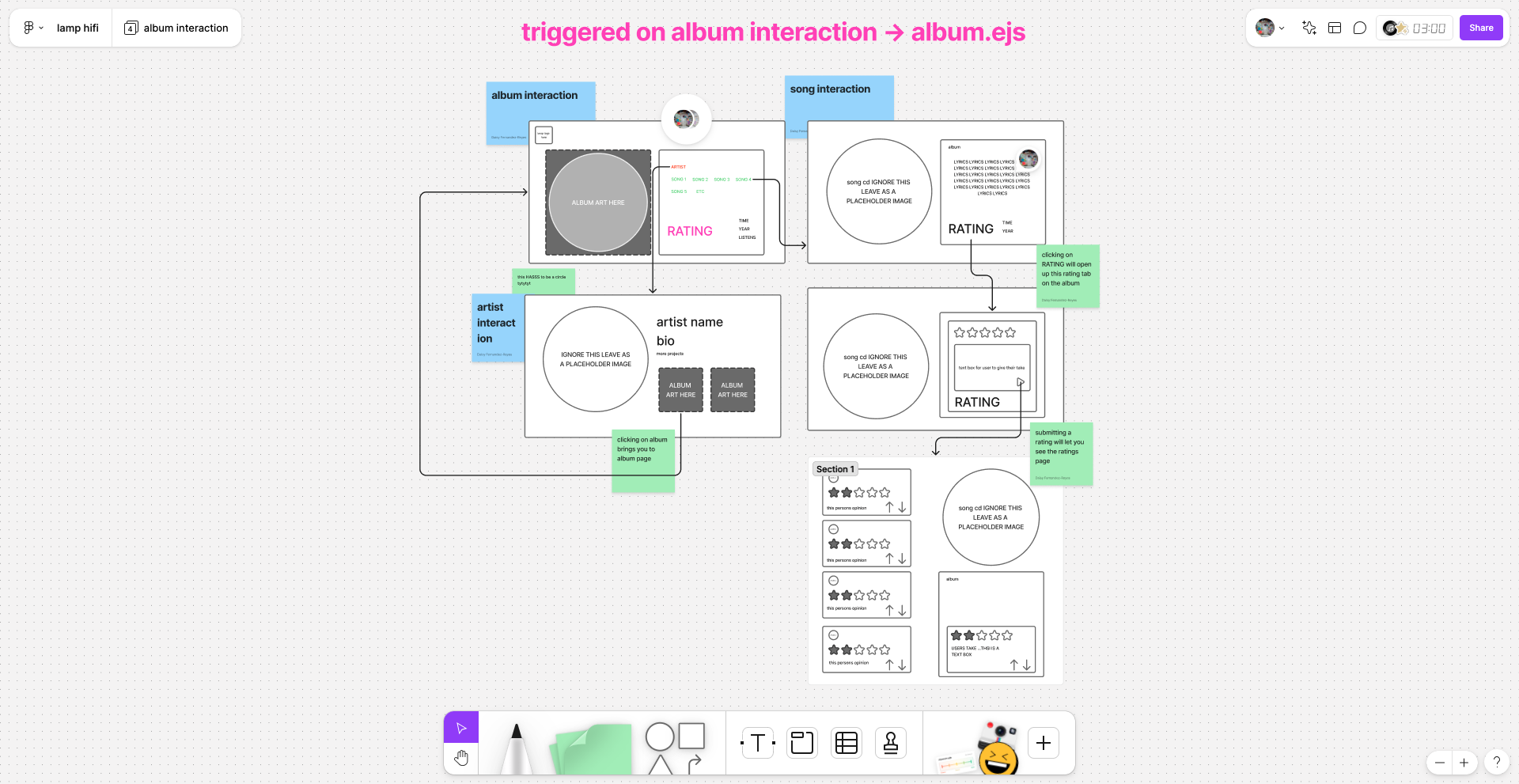intro
LAMP is my senior capstone project, created with Sarah Yoon ’25 and Rory Sullivan ’25. Originally brainstormed as a music diary and catalog, it grew into a social platform for music appreciation and connection. LAMP allows listeners to catalog their music journey, discover new sounds, and connect with others through shared exploration of what it means to be a Listener.
Problem & Competitive Analysis
Music platforms like Spotify, Apple Music, and SoundCloud provide access to music, but they center on streaming
and
playlists. Platforms like Letterboxd and RateYourMusic show the value of cataloging, reviewing, and community
engagement.
Our Problem Statement:
How might we create a platform for listeners — not influencers — that allows them to share, reflect, and connect
authentically through music?
Insights from competitive analysis:
- Spotify / Last.fm → discovery & algorithmic feeds work, but lack depth in community critique.
- Letterboxd / Goodreads → strong review culture & diary-like cataloging could inspire music-specific features.
- Discord / niche forums → authentic communities thrive when there’s less hierarchy and more anonymity.
what does it mean to be a Listener?
audiophiles, critics,fans & enjoyers
One of our proposed ideas for LAMP was the use of user types, kind of like personality quizzes and personality types, we liked the idea of different kinds of music enjoyers and debated what each kind of person would want from a social platform- and then saw potential in the categorization. After a lot of self reflection, and brainstorming, and research we landed on four distinct user types.
We explored different user types to frame how people interact with music:
- 🎧 Audiophile — niche, experimental tastes; seeks artistry.
- 🌊 Explorer — open to genres, driven by discovery.
- 📝 Critic — knowledgeable; values deep analysis and review.
- 💿 Fan — personal connection, memory-based engagement.
Design Opportunities
Based on our research, we saw opportunities to design features for:
- Music Diary / Annotation → space to document personal notes, critiques, or reflections.
- User Type-Driven Feeds → tailoring exploration to Audiophiles, Critics, Fans, Explorers.
- Anonymous Social Interaction → authentic sharing without influencer hierarchies.
- Album Interaction Models → exploring metaphors like picking CDs, vinyls, or cassettes.
users & interactions
With our Listeners in mind, we set out to model interaction around them from the start, allowing them to decide their user journeys from the start.
- picking cd albmums (explorer)
- picking from a list of vinyls (critic)
- picking things from the cd (listener)
- picking from cassettes (fan)
wireframing


- Landing Page → intro to the platform.
- Annotation Mode → write notes, reflect, and share.
- User Interaction Models → explore albums via different metaphors.
Based on these user types and selections, user algorithms, explore pages, and content would be altered, for
example an Audiophile is someone who knows what they like, theyre into the niche and the
abstract.
The feed includes more artsy sounds- more Cordex, less Katy Perry.
An Explorer is someone that likes music- but wants to get out there and discover more genres-
theyre jumping into the deep end of the pool.
A Critic is someone well versed in the medium- they've heard it all and they know how to appreciate it! Critic's
feeds feature industry newcomers,old names-
new names- and new sounds alike, the critic only seeks to enjoy and leave their piece behind.
If given more time, I would have loved to build out database functionality for storing user profiles and diary entries, as well as commentds under user reviews. I would like to create functional prototypes for reviews and community features, because although the project was for school, seeing as the grade was only for software functionality and not end to end completion, I was never able to finish the project with my team to ever devlop it to launch.
what's next for daisy
now that ive had more free time, I've grown reattached to my first fully fledged software project and am in the works of developing for a version 2! I'm excited to share my next steps for the proejct.
- database functionality -> create a database to store user and profile info!
- create user profile interactions
- develop functional; prototypes for reviews
- finish UI for site

